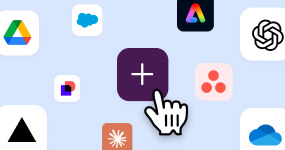Post-pandemic office culture is something every human resources leader is thinking deeply about these days. I’m no exception.
It also feels pretty personal. I was Slack’s first C-level employee based outside of San Francisco, a fact that added to my first-day jitters back in September 2020. Would I be able to engage and build trust with my team, and could I learn and help shape our culture, all from my home “office”?
In reality I was immediately struck by the warmth, humility, intelligence and true “humanness” everyone at Slack brings to work every day.
As a company, one of our top priorities has always been inclusivity in how we build and nurture our culture. It’s a continuous journey that will never be over, but our goal is clear: to create a place where everyone is supported and empowered to do the best work of their lives.
Building this type of environment—during one of the most trying times in history—doesn’t just fall into place by accident. Strong organizational culture requires the right tools to complement and communicate the right values. These tools and values are the rails upon which a company is run. They determine whether you have a smooth journey—with the space and time for genuine connection—or a bumpy ride, where folks are too busy just hanging on to focus on engaging with one another in a more thoughtful and human way.
While we are still learning and growing every day, these are just a few examples of how our team at Slack has used our product over the past year to preserve and strengthen our culture, maintain human connections and continue living our core values of empathy and humility.
ONBOARDING
When Slack shifted to 100% remote work, we had to redesign our in-person onboarding program in a way that didn’t compromise on the human connections or technical knowledge that were built when we brought all new hires to San Francisco for training.
We started by training local leaders to help support new hires in their region through each step of the onboarding process, and ensure the remote experience provided just as many opportunities for engagement and relationship building. We translated content that was previously presented live into asynchronous recordings or Slack posts that could be shared in our new-hire channels, and conducted frequent Q&A’s in Slack channels. As we were reimagining the process, our onboarding teams regularly convened in a dedicated channel to discuss how we could improve.
Last but not least, while we’ve always created special Slack workspaces separate from the company workspace for our new hires and onboarding teams, these workspaces have become even more vital in a remote work environment. They provide new employees with a natural, casual place to interact with one another, get to know their cohort, ask questions and test out their new powers in Slack, without pressure.
INTERNAL COMMUNICATIONS
We preview every All Hands agenda in Slack and allow employees to pre-submit questions via a Slack workflow, giving them more time and flexibility to engage with the content. And because our workforce is distributed around the world, we utilize new Slack capabilities and post asynchronous video, so our employees can watch at their convenience. To help employees engage with the content in the time, place and way that’s best for them, we post a comprehensive recap of the event with slides and any other relevant content, so everyone stays in the loop and feels included. Finally, we have been testing lightweight audio available right through Slack, called Slack Huddles, which is now rolling out to paid teams. This makes it seamless for a couple people or entire teams to instantly jump into—or out of—a conversation, re-creating the spontaneous dialogue that used to happen in the office.

MENTORING & MANAGING
As a new employee at Slack, one of the things I’ve found most impactful about our platform is how it’s helped me get to know each member of my team on a professional and personal level, so I can better support them and help them reach their goals. A huge help in creating these connections and understanding Slack’s culture has been our social channels—from #cooking to #doodles to #fresh-kicks, and #bravo-tv. As a leader, jumping in and participating in these channels has allowed me to share my own humanity and interact with our employees on a much more personal level, while giving them new ways of communicating, which encourages greater engagement.
At the most basic level, the human-centered nature of Slack’s messaging platform makes it conducive to short, friendly exchanges that more closely mirror the real-life conversations that might otherwise occur in the hallways and elevators of Slack HQ. Without the stilted formality of email, I can connect virtually with my reports in a way that enables organic relationship building and helps break down some of the rigidness common in boss/employee relationships. And with new tools like asynchronous video and lightweight, spontaneous audio, we’re constantly innovating to build deeper connections with one another. We can share quick jokes and minor musings that typically wouldn’t warrant an email but that serve as important building blocks in natural human connection.
***
I firmly believe that the best way to build a strong organization is to put human connection at the center of culture. With our flexible and distributed work future, this needs to be woven throughout our digital headquarters. Leaders who want to prioritize humanity in the workplace can help by choosing tools like Slack that encourage engagement, transparency, flexibility and a bit of fun too.






